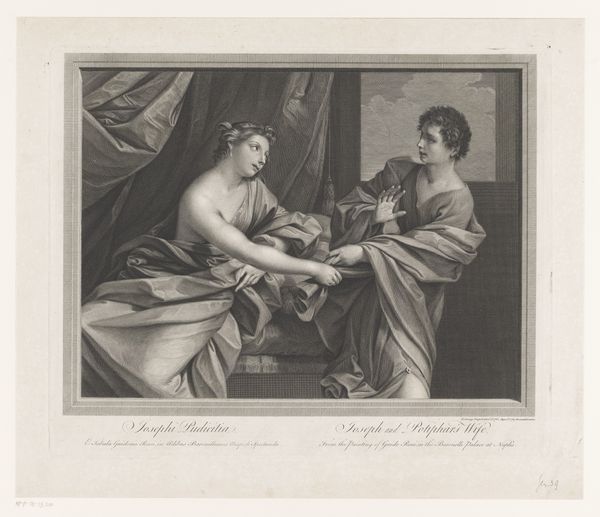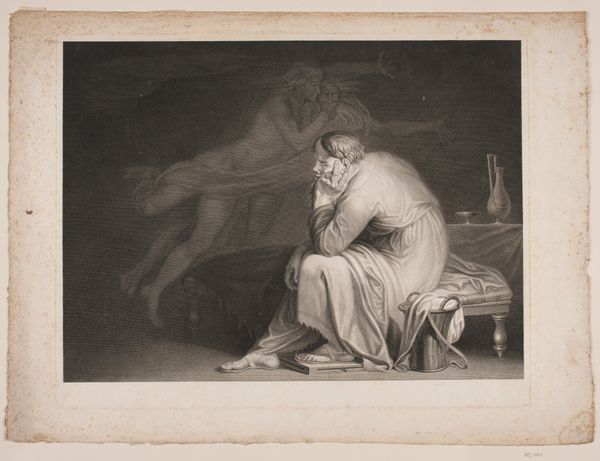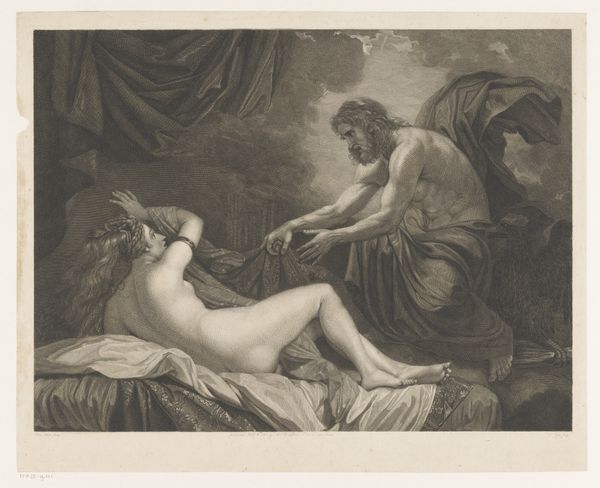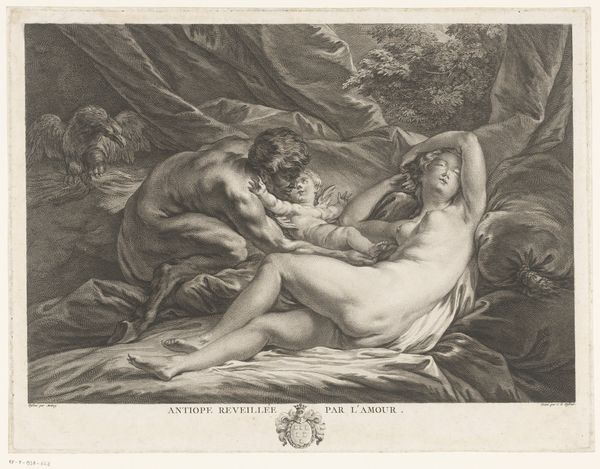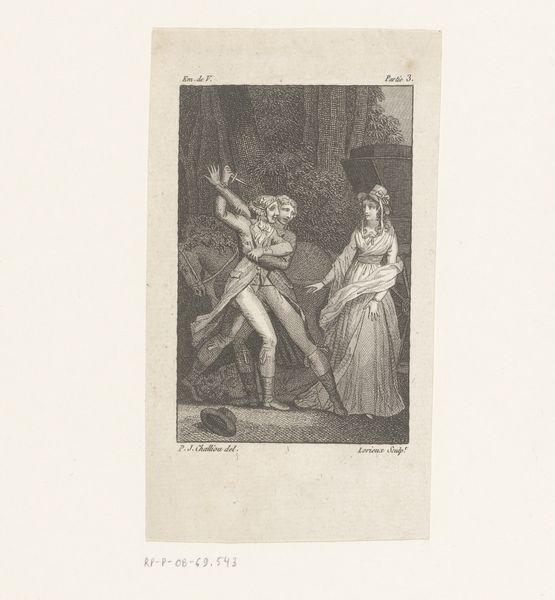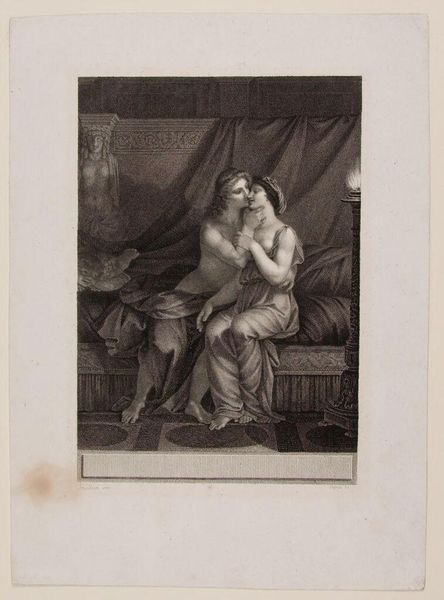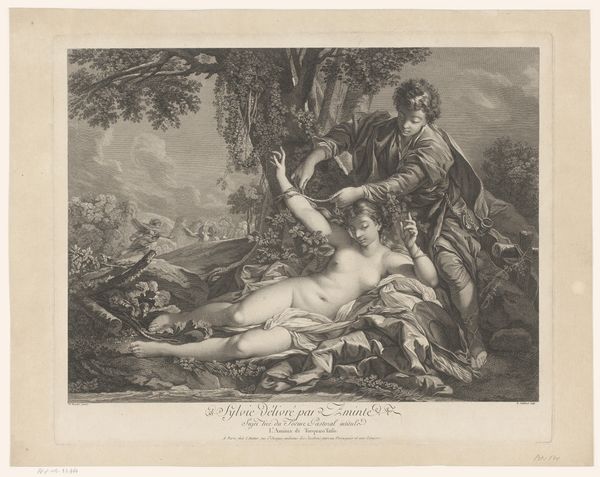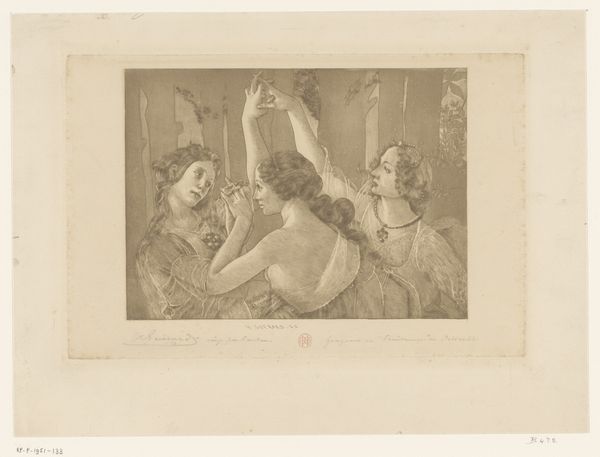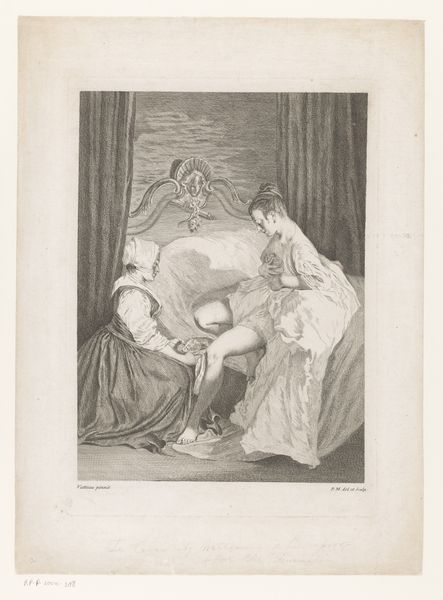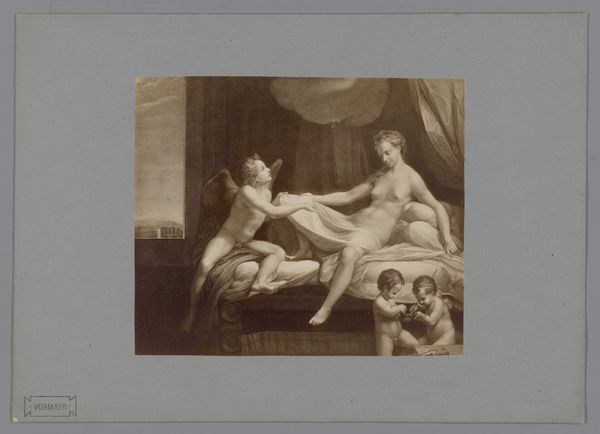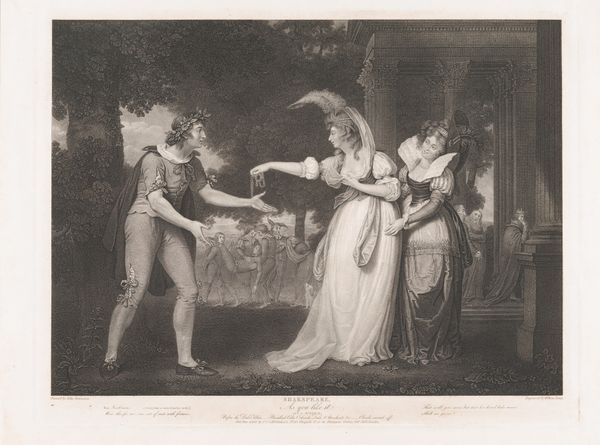
drawing, print, etching, engraving
#
drawing
#
neoclacissism
#
narrative-art
# print
#
etching
#
figuration
#
history-painting
#
academic-art
#
nude
#
engraving
Dimensions: Plate: 12 13/16 × 14 5/8 in. (32.6 × 37.2 cm) Sheet: 13 1/16 × 14 7/8 in. (33.2 × 37.8 cm)
Copyright: Public Domain
Curator: Joseph Adrianus Clarot created this engraving in 1793. Titled "Joseph and Potiphar's Wife," it depicts a dramatic scene rooted in biblical narrative. Editor: Immediately striking is the high contrast; the interplay of light and shadow emphasizes the palpable tension and underlying narrative. The flowing drapery in the background also frames and enhances the dramatic weight of the encounter. Curator: Indeed. The artist engages with a recurring motif within Neoclassicism. Consider the moral implications presented in an era where discussions about virtue and corruption became points for debate and reflection among public audiences. Joseph becomes a figure of rectitude, resisting seduction. Editor: You can see that moral conflict manifested directly in the formal structure, too. Notice the solid forms of the figures themselves: clearly delineated and set against a more atmospheric, ambiguous background. Clarot seems to use composition to symbolize that divide. Curator: Absolutely. The piece aligns perfectly with the artistic values gaining popularity in revolutionary France: a preference for stories of ethical heroism, of individuals standing firm against temptation and injustice. Consider the print's distribution through networks that included political actors, and it functions not merely as aesthetic art. Editor: Observe how the formal academic style reinforces that sense of idealized morality: Joseph’s averted gaze and hand gestures speak clearly of resistance, even of purity, whereas the woman's are persuasive, as if actively breaking social codes. This contrast makes that moment legible, and it is highlighted with those dynamic diagonals formed between their bodies. Curator: What's intriguing is the dissemination of images like this as printed material, which made art and associated political themes far more available to varied societal echelons than conventional artwork could ever hope for. It allowed common citizens to ponder over what virtue actually meant during these turbulent decades. Editor: Yes, in the end it goes beyond surface beauty. Even without grasping the nuances within its period, one can see here, purely through design aspects and deployment of light, how it brings attention to conflict, and how bodies turn to deliver an intense emotion. Curator: It does urge us to examine our standards and their manifestations through artwork, which allows public interaction with profound cultural ideas. Editor: The strength and moral content are embedded into Clarot’s refined composition! A lesson on virtue through line and form.
Comments
No comments
Be the first to comment and join the conversation on the ultimate creative platform.

